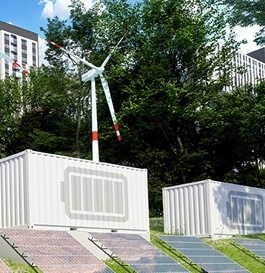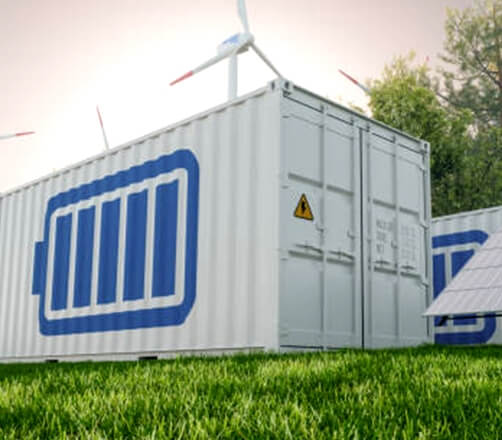On Grid Solar System
Introduction to On Grid Solar Systems
In the quest for sustainable energy solutions, on grid solar systems have emerged as a leading choice for homeowners and businesses alike.


These systems are directly connected to the public electricity grid, allowing users to harness the power of the sun while maintaining a reliable connection to traditional power sources. This hybrid approach offers the best of both worlds: renewable energy and consistent electricity supply.
Satisfaction Value For Money Solution
Business Accounting Management
Inventory Management Tracking System
The world as it is heavily dependent
Reliability and performance
How On Grid Solar Systems Work
On grid solar systems, also known as grid-tied or grid-connected systems, consist of several key components:
Solar Panels Capture Sunlight
Photovoltaic (PV) panels, typically installed on rooftops, absorb sunlight and convert it into direct current (DC) electricity.
Inverter Conversion
The DC electricity generated by the solar panels is sent to an inverter, which converts it into alternating current (AC) electricity. AC is the standard form of electricity used in homes and businesses.
Electricity Usage
The AC electricity is then used to power appliances and devices within the home or business, reducing the amount of electricity needed from the grid.
Grid Connection
On grid solar systems are connected to the public electricity grid, allowing for a seamless integration of solar power and grid electricity.
Net Metering
Many on grid systems use a process called net metering, where excess electricity produced by the solar panels is sent back to the grid. This can earn the system owner credits or reduce their electricity bill.
Electric Meter Monitoring
A bi-directional electric meter tracks the amount of electricity generated by the solar panels and the amount drawn from the grid. This helps in calculating net usage and potential savings.
Excess Energy
When the solar panels produce more electricity than is needed, the surplus energy is fed back into the grid, often resulting in financial credits for the user.
Grid Supply
During periods when the solar panels are not producing enough electricity (e.g., at night or during cloudy days), electricity is automatically drawn from the grid to meet the demand.
Utility Interaction
The seamless interaction between the solar system and the grid ensures that there is always a reliable source of electricity, without any manual switching required by the user.
FAQ's

An on-grid solar system, also known as a grid-tied or grid-connected system, is a solar power generation system that is connected to the utility grid. In this setup:
- Solar panels generate electricity from sunlight, converting it from DC (direct current) to AC (alternating current) using an inverter.
- The AC electricity produced by the solar system can be used to power appliances and devices in your home or business.
- Any excess electricity generated by the solar panels can be fed back into the grid through a process called net metering.
- During times when solar generation is insufficient (such as at night or on cloudy days), electricity is seamlessly sourced from the grid.
The choice between on-grid and off-grid solar systems depends on your specific needs and circumstances:
- On-grid solar systems are typically more cost-effective to install because they do not require batteries or extensive backup systems. They rely on the grid for backup power, which can be reliable in most urban and suburban areas.
Off-grid solar systems, on the other hand, provide energy independence and are suitable for locations without access to the grid or where grid electricity is unreliable. They require battery storage to store excess energy for use during periods of low or no sunlight.
Key considerations:
- Cost: On-grid systems are generally cheaper upfront due to fewer components required.
- Reliability: On-grid systems are more reliable during periods of low solar generation because they can draw power from the grid.
Independence: Off-grid systems offer independence from utility companies but require careful planning and maintenance of battery systems.
- Cost-effectiveness: On-grid systems are generally cheaper to install because they don't require batteries or extensive backup systems.
- Grid backup: Electricity from the grid can be used when solar generation is insufficient, ensuring continuous power supply.
- Net metering: Excess solar power can be fed back into the grid, earning credits or reducing electricity bills.
- Minimal maintenance: Without batteries, maintenance costs are lower compared to off-grid systems.
The cost of a 3 kW solar panel system in India varies based on quality, brand, installation factors, and location. Generally, it can range from ₹1.5 lakh to ₹3 lakh or more.
An on-off-grid solar system, also known as a hybrid solar system, combines features of both on-grid and off-grid systems. It allows the user to switch between grid-tied operation (using electricity from the grid and possibly exporting excess solar power) and off-grid operation (using stored battery power) as needed.
MPPT stands for Maximum Power Point Tracking. It's a technology used in solar charge controllers and inverters to maximize the efficiency of solar panels. MPPT continuously monitors and adjusts the operating voltage and current of solar panels to extract maximum power under varying sunlight conditions.
An on-grid inverter, also known as a grid-tie inverter, converts DC (direct current) electricity generated by solar panels into AC (alternating current) electricity suitable for use in homes or businesses. These inverters synchronize with the utility grid to ensure seamless integration of solar power with grid electricity.
In a solar on-grid system:
- Solar panels generate DC electricity from sunlight.
- The on-grid inverter converts DC electricity into AC electricity.
- AC electricity is used to power appliances in the home or business.
- Excess electricity, if any, can be fed back into the grid through net metering.
- Electricity from the grid supplements solar power when needed, ensuring continuous supply.
Subsidies on solar systems in India vary by state and are often offered under government schemes to promote renewable energy adoption. These subsidies can cover a portion of the installation cost and may include incentives for grid-connected solar systems.
A 3 kW solar panel system typically consists of multiple solar panels, each of which is usually around 300-400 watts in capacity. The physical size of each panel can vary but is generally about 1.6 meters by 1 meter in dimension, depending on the specific model and manufacturer.
